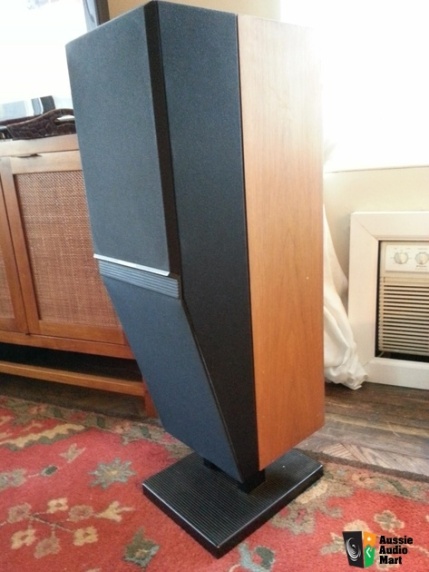In the last line of my LS3/5A blog post I wondered how far we’ve really come in the last four decades or so of electro-acoustic engineering. The question prompted a comment from one well known speaker engineer that we’ve come a long way in terms of driver design, particularly in diaphragm materials and magnet systems (in both cases perhaps more as a result of advances in analysis tools than in materials), but that we’ve really gone nowhere in terms of enclosure design. But I think it might be worse than that – I think we’ve gone backwards.
The significance of enclosure design can be appreciated simply by comparing the radiating area of, say, a 180mm bass/mid driver, with the potential radiating area of the cabinet walls enclosing it. The ratio is typically around 30 to 1 in favour of the cabinet walls. And then if you factor-in a modest musical dynamic range of, say, 60dB, which in ratio terms is 1000 to 1, it’s pretty obvious that the enclosure walls don’t have to move much to make a significant contribution to the sound of a speaker.
This of course isn’t an original thought. It was well known back in the 1970s, and, once again raiding the old BBC technical archive, a report by Dudley Harwood (again) probably counts as the trailblazing analysis of the subject. Speakers designed by Harwood, and others at the BBC were invariably characterised by the efforts made to reduce the contribution of the cabinet. Thin-wall (12mm), birch plywood panels with carefully targeted damping pads, combined with hardwood bracing and corner fillets was the BBC recipe. Outside the BBC too, among British hi-fi speaker companies of the 1970s and 1980s, stopping the cabinet singing along with the music was a big deal: Celestion introduced the SL600 with its aerolam cabinet, (Wharfedale tried aerolam too, designed by the same engineer – Graham Bank), KEF followed the decoupled driver route, Roy George’s Naim SBL employed clever engineering to decouple elements of the cabinet from each other, and I developed System 442 at Mordaunt-Short in which the drivers were bolted directly to a rigid internal skeleton from which the enclousre was “hung” via compliant gaskets.

Fast forward to 2016 however and the significance of the cabinet, at least in the overwhelming majority of the nearfield monitors I get to review for Sound On Sound, seems to have been completely forgotten. There’s no damping pads, precious little cabinet bracing and nothing to suggest that much engineering time or manufacturing budget has been spent on the issue. And of course the results are speakers that, while being suitably advanced in driver technology, tend to reveal their unsophisticated enclosure design through the kind of characteristic tonal colourations that I suspect would have offended Dudley Harwood back in 1970.
But why is this? Of course one obvious reason is cost. The active nearfield monitor market is intensely price competitive and in any particular speaker the enclosure is likely to be the most expensive item on the bill of materials, so it will be at the top of the list to suffer from the pressure to hit a price point. But maybe also we’re listening now in different ways. While Dudley Harwood and his BBC colleagues, and his contemporaries in commercial speaker design, concentrated hard on creating speakers that could accurately reproduce real, unadulterated instruments and voices, perhaps we now spend more time listening to, say, compression laws, piano samples, reverb tails and auto-tune artefacts. Have we forgotten what old-fashioned cabinet colouration sounds like?

Hi,
Happy owner of a pair of System 442 😊👌
LikeLike
Just came across your June 2016 blog on the contribution of the enclosure to loudspeaker performance.
B&W also made a great strides in this regard admittedly in their higher range models using matrix bracing. Peter Comeau currently designing for Wharfedale also points the finger of suspicion at MDF which he believes has inferior acoustic properties even to humble chipboard, which is interesting. I believe that MDF has proved popular because it machines well and is relatively cheap when for example compared to quality plywood. Consider – if most loudspeakers today are made from MDF (even very expensive top of the line Focals) how are we to tell if other man-made boards are superior for use in loudspeaker construction?
LikeLike